A Level CIE Biology: 14 Homeostasis
1/56
There's no tags or description
Looks like no tags are added yet.
Name | Mastery | Learn | Test | Matching | Spaced |
|---|
No study sessions yet.
57 Terms
homeostasis
the process of maintaining constant internal body conditions
in order to function properly and efficiently, organisms…
have diff control systems that ensure their internal conditions are kept relatively constant
why is homeostasis important
ensures the maintenance of optimal conditions for enzyme action and cell function
sensory cells
detect information about the conditions inside and outside of the body
6 physiological factors controlled by homeostasis in mammals:
core body temp
metabolic waste e.g. co2 and urea
blood pH
conc of glucose in blood
water potential of blood
conc of respiratory gases (co2 and o2) in blood
how is homeostatic balance (keep factors within certain limits) maintained
majority of homeostatic control mechanisms in organisms use negative feedback
3 things negative feedback control loops involve
receptor
coordination system
effector
receptor/sensor
detects stimulus that is involved with condition/physiological factorc
coordination system (nervous and endocrine)
transfer information between different parts of body
effector (muscles and glands)
carry out a response
3 outcomes of negative feedback loop:
factor/stimulus is continuously monitored
if increase in factor, body responds to make factor decrease
if decrease in factor, body responds to make factor increase
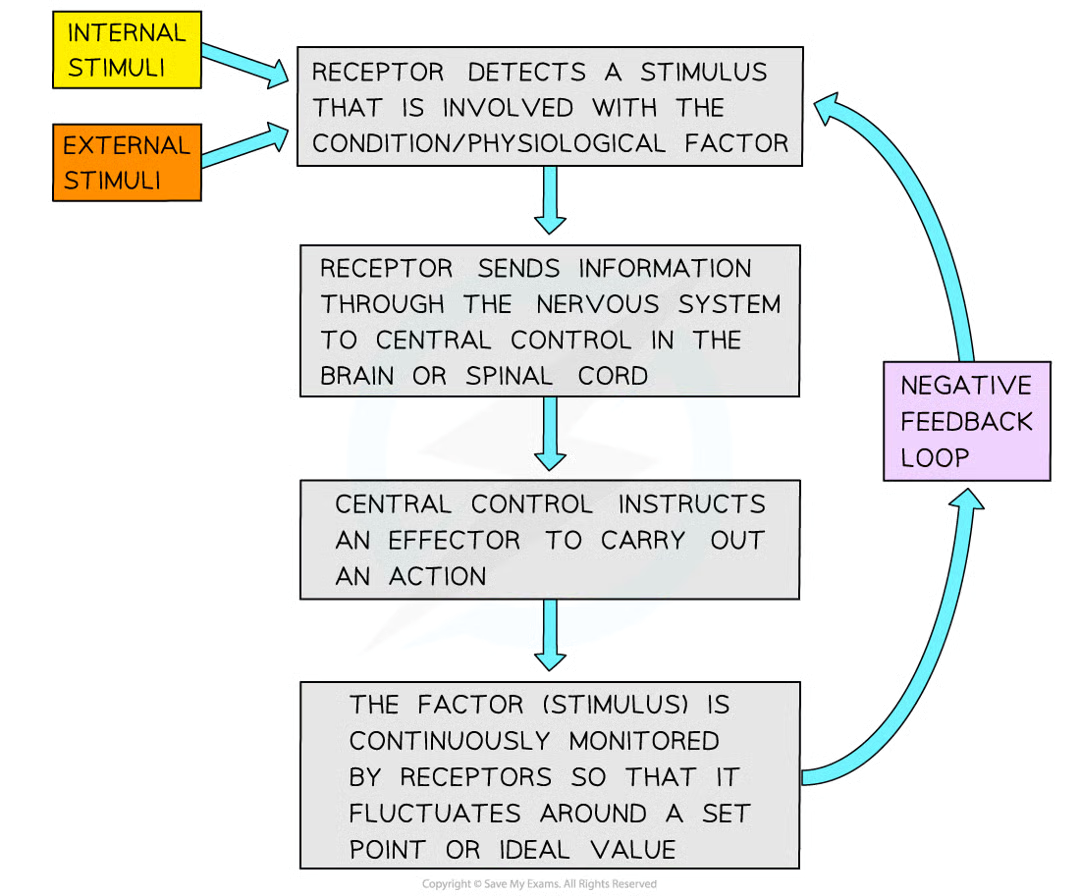
what 2 coordination systems does homeostasis in mammals rely on to transfer info between diff parts of body
nervous - info transmitted as electrical impulses that travel along neurones
endocrine - info transmitted as chemical messengers called hormones that travel in blood
what do metabolic reactions within body produceq
waste products
excretion
removal of waste products (e.g. co2 and urea)
where is urea produced
liver
why is urea produced
excess amino acids, if more protein eaten than required, excess can’t be stored in body.
why does deamination occur
amino acids within protein provides useful energy so amino group must be removed from each amino acid to make energy accessible
deamination 3
the amino group (-NH2) of an aa is removed, together with an extra hydrogen atom
these combine to form ammonia (NH3)
the remaining keto acid may enter the krebs cycle to be respired, be converted to glucose, or converted to glycogen/fat for storage
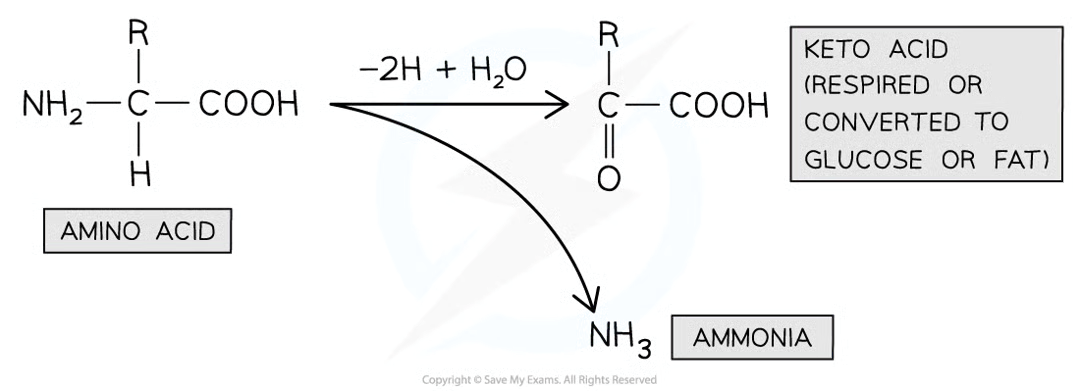
ammonia features 3
very soluble
highly toxic compound
produced during deamination
why is ammonia damaging if allowed to build up in blood 3
dissolves in blood to form alkaline ammonium hydroxide, disrupting blood pH
impacts reactions of cell metabolism e.g. respiration
interferes with cell signalling processes
why is ammonia converted to urea
urea is less soluble and less toxic than ammonia
how is ammonia converted to urea
combined with co2

kidney 2 functions
osmoregulatory organ - regulate water content of blood (vital for maintaining blood pressure)
excretory organ - excrete toxic waste products of metabolism (e.g. urea) and substances in excess of requirements (e.g. salts)
humans have_ kidneys
2
excretory system diagram
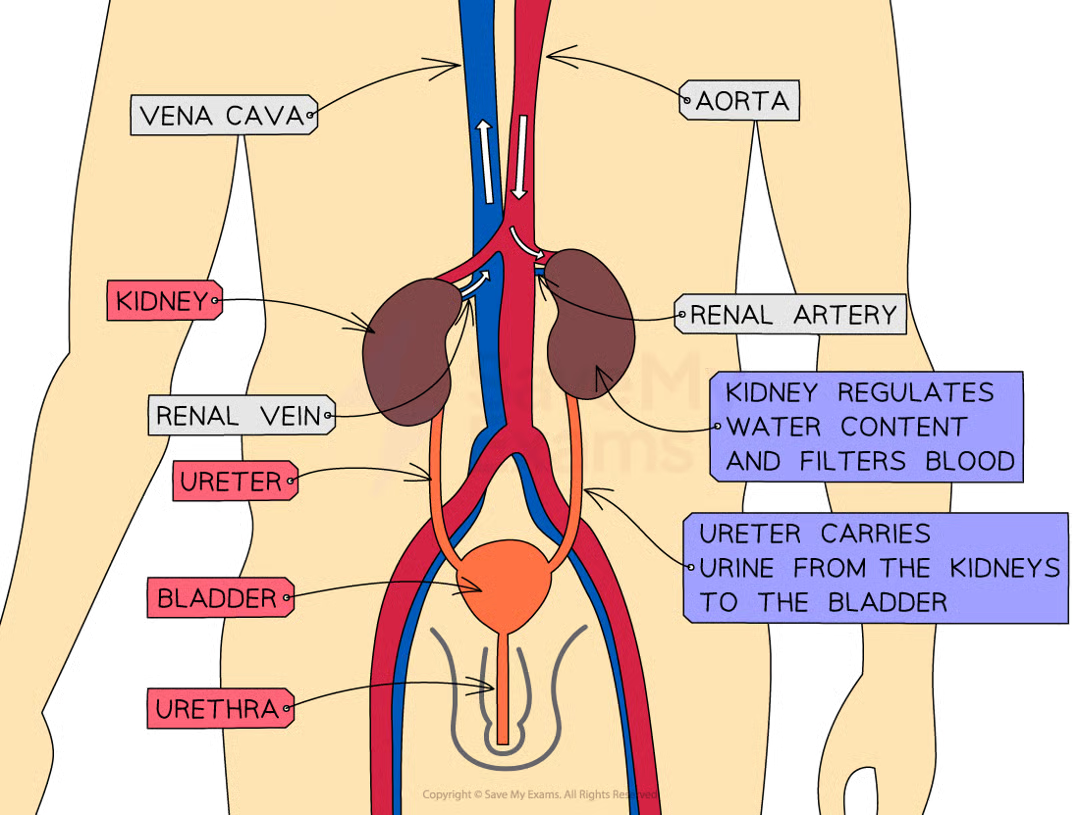
structures of excretory system
renal artery
renal vein
kidney
ureter
bladder
urethra
renal artery function
carries oxygenated blood (containing urea and salts) to the kidneys
renal vein function
carries deoxygenated blood (that has had urea and excess salts removed) away from the kidneys
kidney function
regulates water content of blood and filters blood
ureter function
carries urine from the kidneys to the bladder
bladder function
stores urine (temporarily)
urethra function
releases urine outside of the body
fibrous capsule
fairly tough outer layer that surrounds the kidney
3 main kidney parts beneath the fibrous capsule
the cortex (contains glomerulus as well as Bowman’s capsule, proximal convoluted tubule, and distal convoluted tubule of the nephrons)
the medulla (contains loop of Henle and collecting duct of the nephrons)
the renal pelvis (where the ureter joins the kidney)
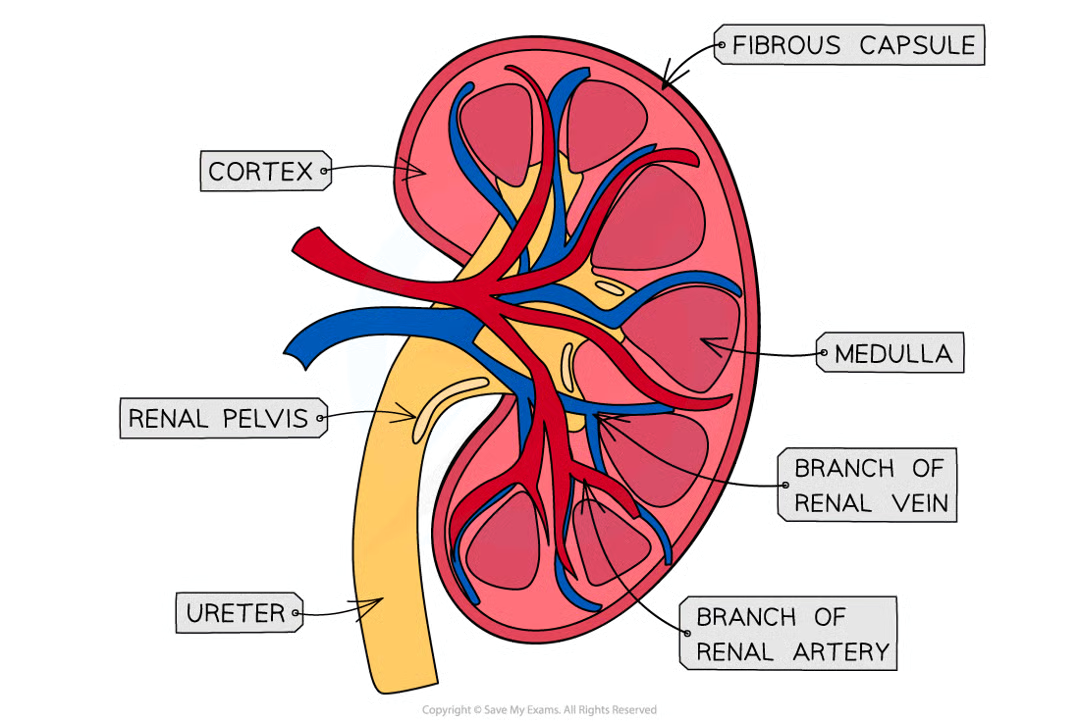
nephron 3 features
thousands of tiny tubes in each kidney
functional unit of the kidney
responsible for urine formation
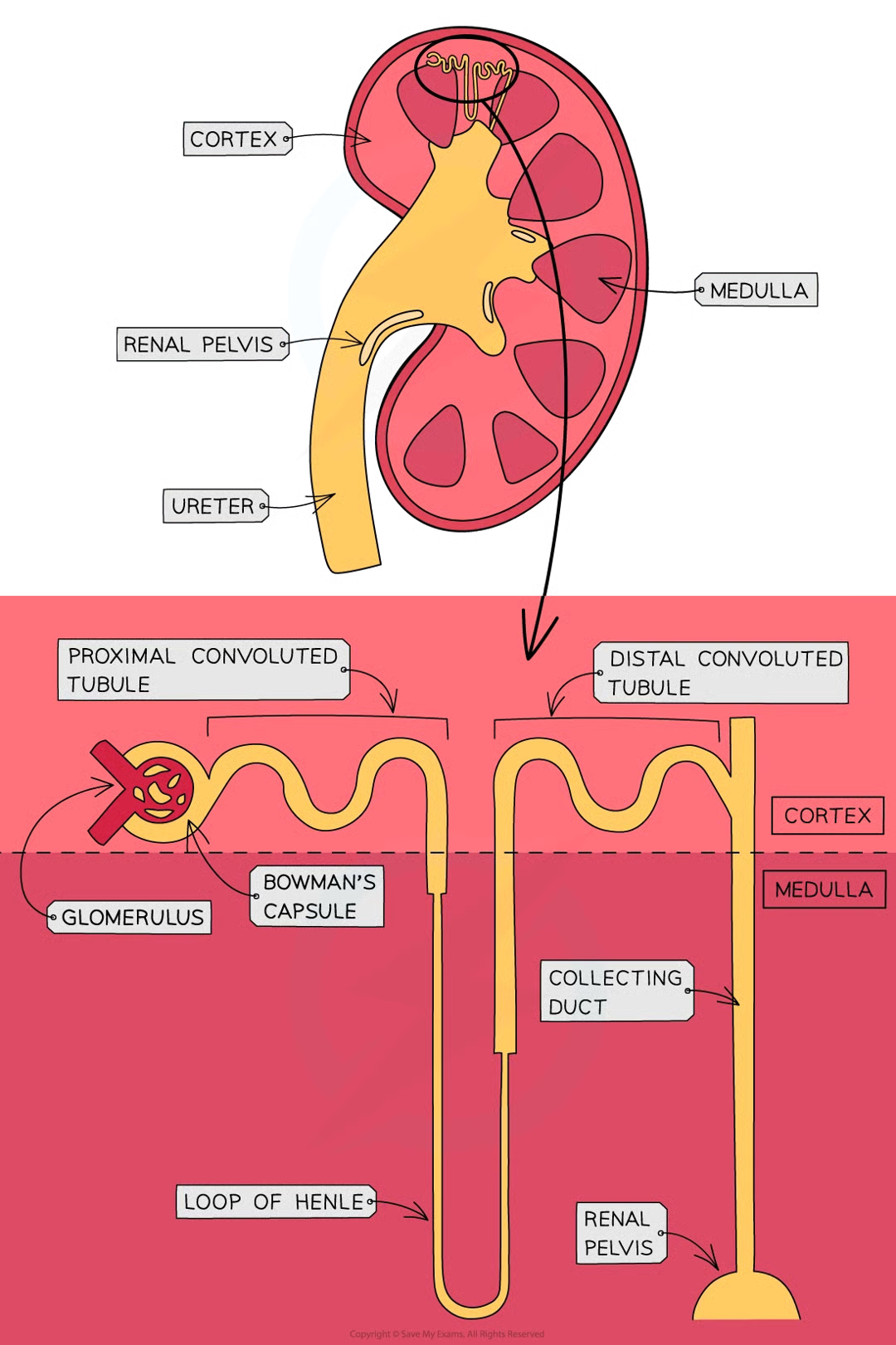
network of blood vessels associated with each nephron:
within bowmans, each nephron = glomerulus
each glomerulus is supplied w blood by an afferent arterial (which carries blood from renal artery)
capillaries of the glomerulus rejoin to form efferent arteriole
blood flows from efferent arteriole into network of caps that run closely alongside rest of nephron
blood from caps eventually flows into renal vein
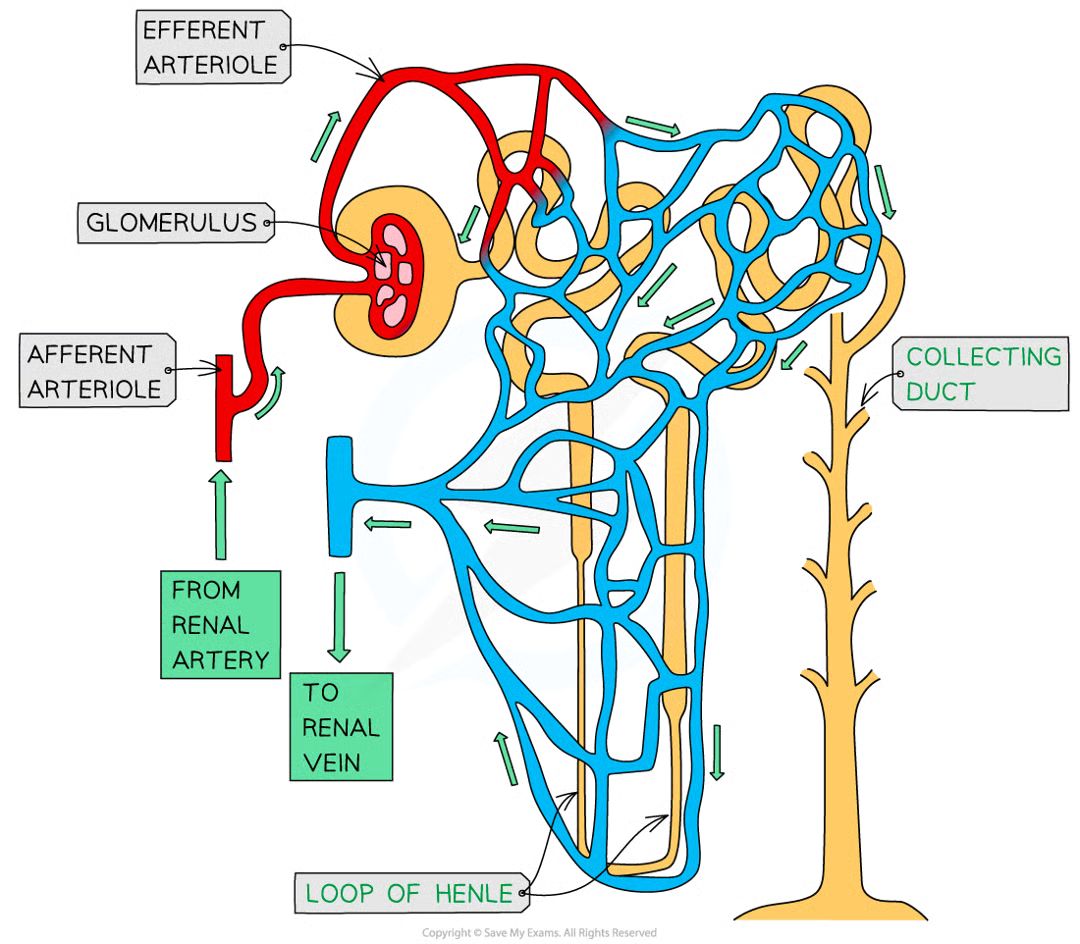
2 stages of urine formation in the kidneys
ultrafiltration
selective reabsorption
where does ultrafiltration occur
bowman’s capsule
where does selective reabsorption occur
proximal convoluted tubule
ultrafiltration:
small molecules (including aas, water, glucose, urea and inorganic ions) are filtered out of blood caps of glomerulus and into bowman’s capsule to form filtrate known as glomerular filtrate
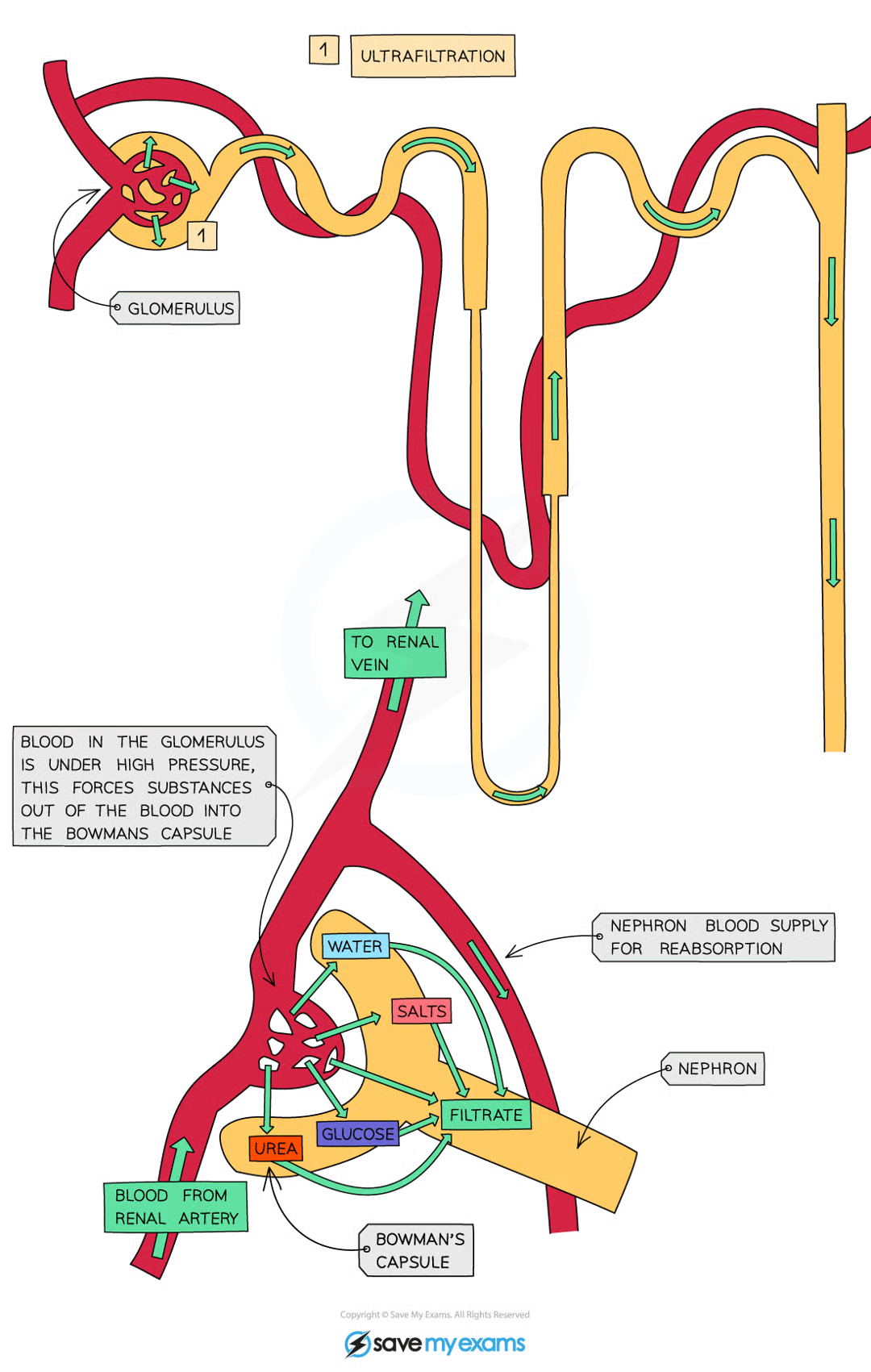
selective reabsorption
useful molecules are taken back/reabsorbed from the filtrate and returned to the blood as the filtrate flows along the nephron
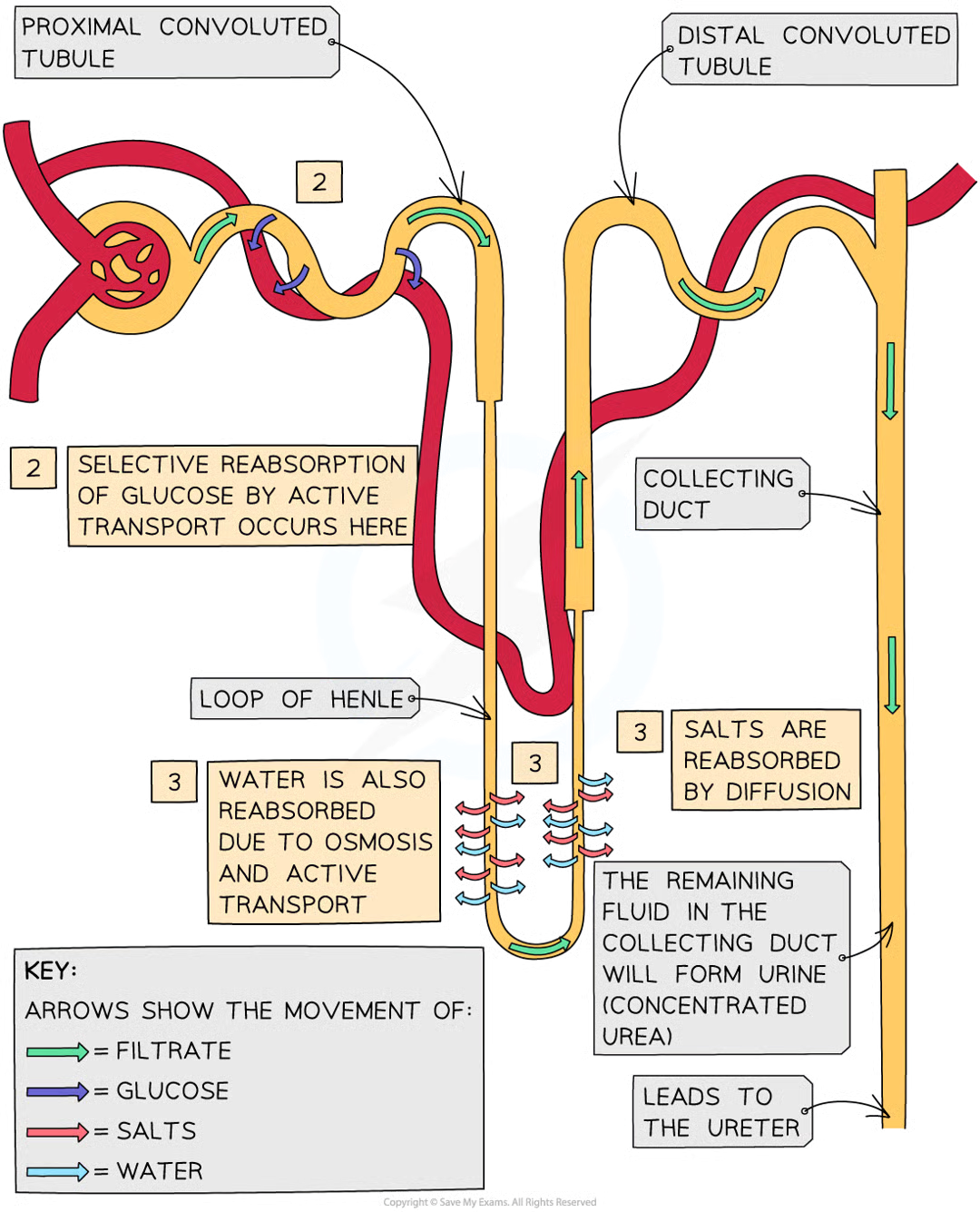
what happens after selective reabsorption (2)
after the necessary reabsorption of aa, water, glucose and inorganic ions is complete (even some urea is reabsorbed), the filtrate eventually leaves the nephron and is now referred to as urine
urine flows out of kidneys, along the ureters and into the bladder, where it is temporarily stored
ultrafiltration: where and why do arterioles branch off
they branch off the renal artery and lead to each nephron, where they form a knot of capillaries (glomerulus) sitting inside the cup-shaped Bowman’s capsule
ultrafiltration: why is pressure increasing further into the glomerulus
capillaries get narrower and increases pressure on blood moving through which is already at high pressure bc directly from renal artery connected to aorta
ultrafiltration: what is the effect of increasing pressure in glomerulus
smaller molecules being carried in the blood is forced out of caps into bowman’s capsule, where they form filtrate
ultrafiltration: how is the glomerular capillaries separated from the lumen on Bowman’s
by 2 cell layers with a basement membrane:
first cell layer: endothelium of the capillary - each capillary endothelial cell is perforated by thousands of tiny membrane-lined circular holes
next layer: basement membrane - made up of network of collagen and glycoproteins
second cell layer: epithelium of bowman’s capsule - these epithelial cells have many tiny finger-like projections with gaps in between them known as podocytes
ultrafiltration: what happens as blood passes through the glomerular capillaries
the holes in cap endothelial cells and the gaps between podocytes allow substances dissolved in blood plasma to pass into bowman’s capsule
glomerular filtrate
glomerular filtrate
the fluid that filters through from the blood into bowman’s with main substances passing out:
amino acids
water
glucose
urea
inorganic ions (mainly Na+, K+, Cl-)
ultrafiltration: why do red and white blood cells and platelets remain in the blood
too large to pass through the holes in capillary endothelial cells
ultrafiltration: basement membrane
acts as filter as it stops large protein molecules from getting through
ultrafiltration diagram
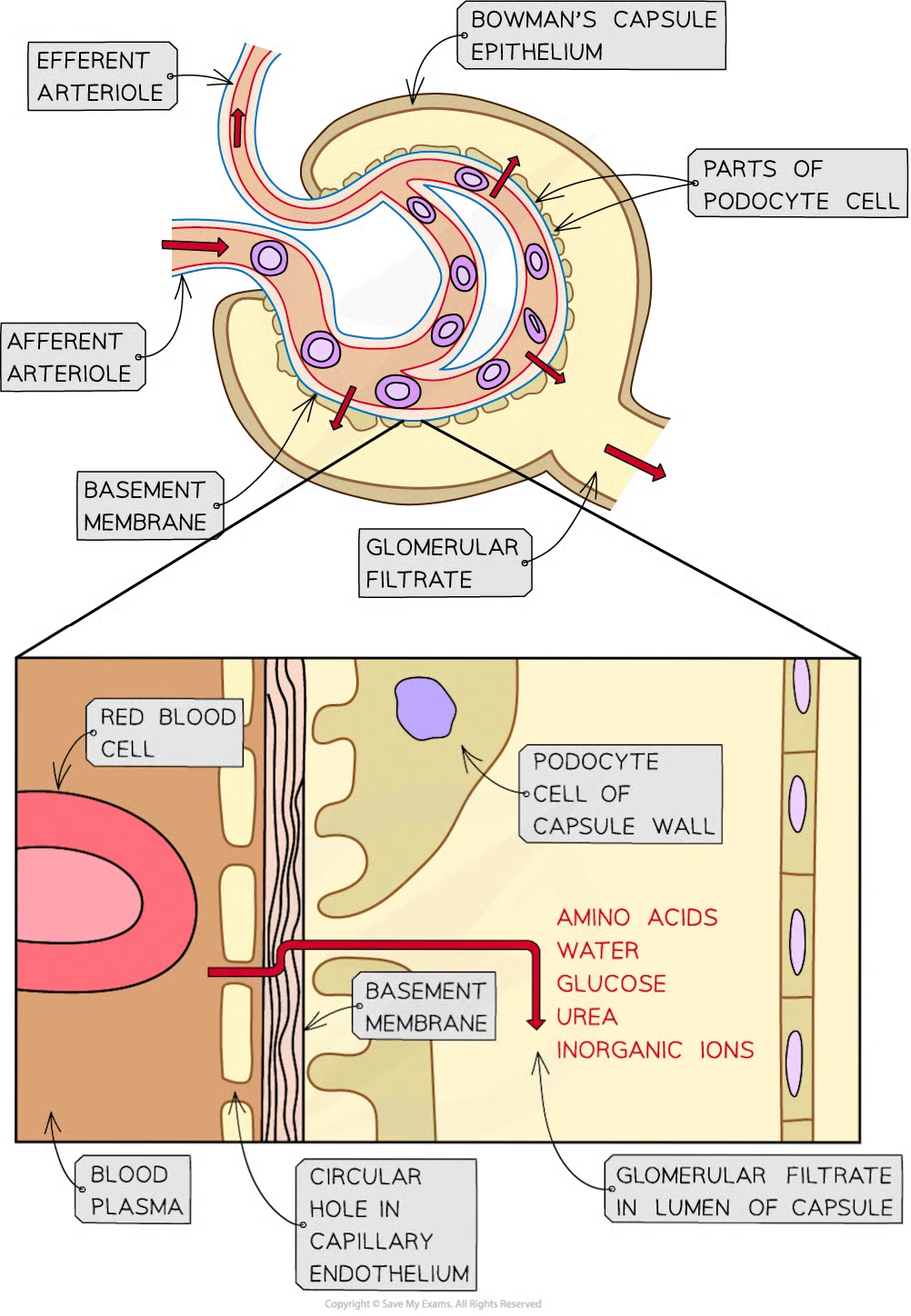
why does ultrafiltration occur
due to differences in water potential between plasma in the glomerular caps and the filtrate in the bowmans (water moves down water potential gradient, from region of high wp to lower wp. wp increased by high pressure, decreased by solutes)
2 factors affecting water potential
pressure
solute concentration
how pressure affects wp in glomerulus and bowmans
as afferent arteriole is wider than efferent, bp high in glom caps
wp of blood plasma in glom caps is raised above wp of filtarte in bowmans
water moves down wp gradient from blood plasma in glom caps into bowmans
how solute concentration affects wp in glom and bowmans
basement membs allow most solutes within blood plasma to filter into bowmans, plasma protein mols are too big to get thru and stay in blood
solute conc in blood plasma in glom caps higher than the filtrate in bowmans capsule
wp of blood plasma lower than that of filtrate in bowmans
water moves down wp gradient from bowmans cap into blood plasma in glom caps
the effect of pressure gradient outweighs…
effect of solute gradient, therefore wp of blood plasma in glom > wp of filtrate in bowmans so blood flows thru glom, overall movement of water down wp gradient from blood into the bowmans capsule
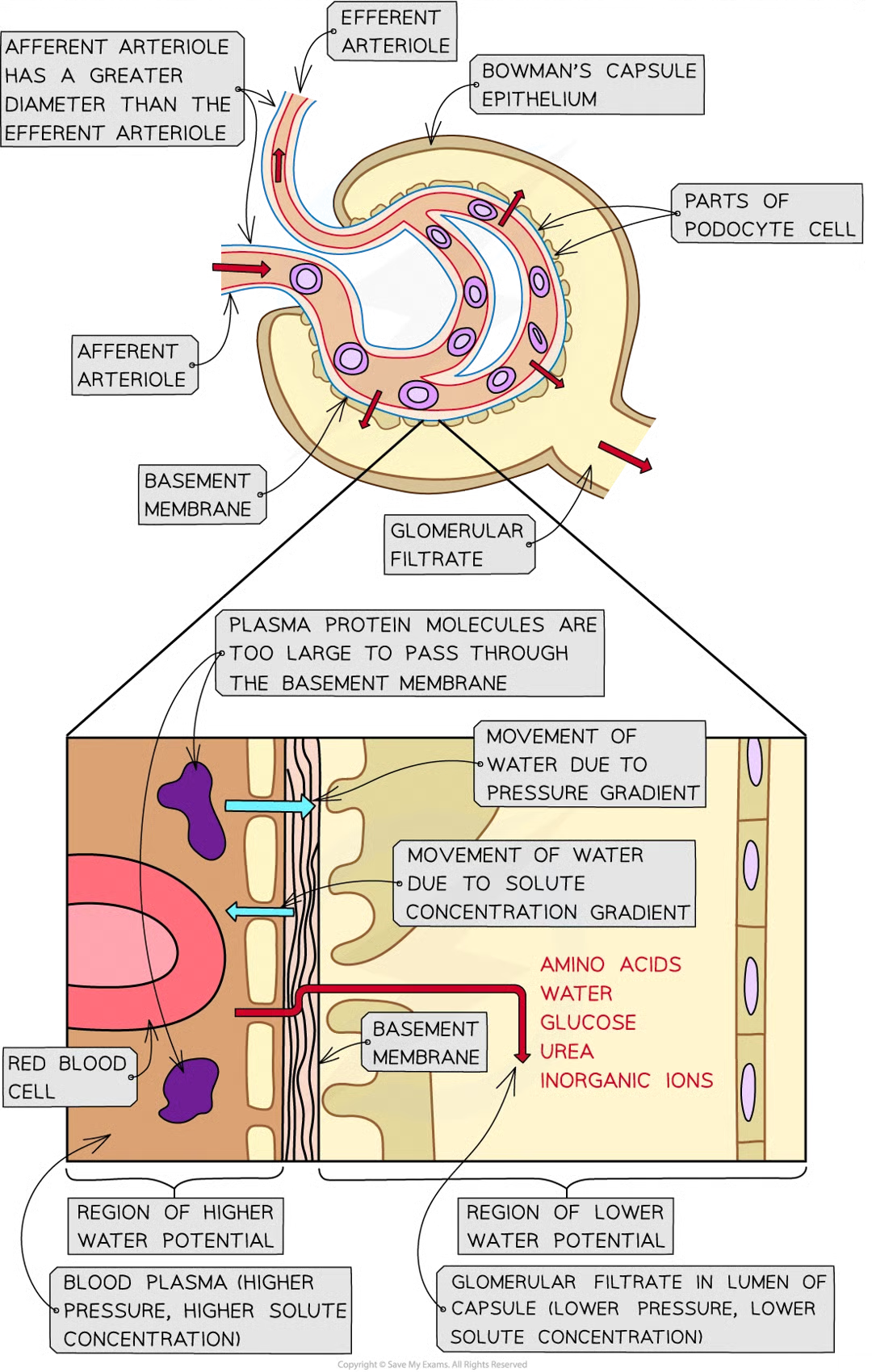
seelective reba